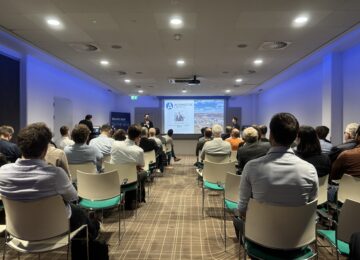TenneT: Risks to security of supply are increasing, incentive flex needed
Today TenneT published a new version of the 'Security of Supply Monitor'. This report is published every year on behalf of the Ministry of Economic Affairs and Climate Change and examines developments concerning security of supply and the stability of the energy system. The report shows that there will be sufficient power until 2030, but that the risk of security of supply problems will have increased thereafter. According to TenneT, the development of energy storage, in addition to demand management and controllable power, plays an important role in preventing power outages.
Supply security problems are increasing
The report states that security of supply until 2030 appears to be assured by the fact that sufficient (fossil) controllable power plants can be deployed. Connections abroad can also provide some of the necessary flexibility. After 2030, however, the risks to security of supply increase rapidly. This is a consequence of increasing electrification and the ambition to operate a fully CO2-neutral electricity system in all European member states by 2035. As a result, it is expected that towards 2035 there will be an average of 14 hours per year of insufficient power to meet demand.
This can lead to various problems, such as an increased risk of power outages and strong fluctuations in energy prices. TenneT expects that industry in particular will be affected. In the future, companies may be asked to switch back production more often, which will quickly mean large losses in sales. This entails significant risks for the Dutch business climate.
Market development of battery storage slower than hoped for
Energy storage in the form of batteries are an important part of the solution, according to the Security of Supply Monitor. Last year's Supply Security Monitor already showed that by 2030 some 10 GW of flexibility via batteries will be needed to meet supply security standards. The most recent update shows that, based on current market developments, up to 4.9 GW of battery power can be realized (4-hour batteries). This while batteries are one of the key technologies to deliver flex in the reserve and balancing markets, according to TenneT. The lagging growth of flex sources, such as batteries, and other forms of CO2-free controllable power are increasing the risk of security of supply issues.
In addition, TenneT notes that the profitability of battery storage remains uncertain until 2030. It depends in particular on the revenues that battery operators can obtain from the various markets, but also depends heavily on the uncertain development of battery costs.
More policies needed to encourage flex
To avoid longer-term problems, TenneT is calling on the government to come up with active policies to safeguard the security of electricity supply. This should take the form of an implementation plan to be reviewed by the European Commission. The implementation plan should focus on encouraging flexibility and removing barriers in legislation and regulations. This applies to energy storage as well as, for example, self-generation, demand-side management and energy efficiency.
TenneT identifies three concrete measures that can be taken in the coming years. First of all, the grid operator calls for phasing out the balancing regime, in order to stimulate demand response among small consumers and to spur investment in energy storage. In addition, the introduction of a strategic reserve can offset some of the anticipated shortfalls. If this is still not enough to prevent the foreseen problems, it can be decided to introduce a capacity mechanism such as a capacity market.
Another major barrier to storage development is grid tariffs. TenneT states that fixed operating and maintenance costs for batteries are higher than for other technologies, as batteries connected to the high-voltage grid must pay hefty grid tariffs in addition to fixed maintenance costs. This remains a problem for the rollout of batteries even after the implementation of the time-based transmission right (ATR85). Energy Storage NL card already addressed this problem last year within the National Grid Congestion Action Program and argues that a better rate structure for storage remains necessary to create a level playing field with other European countries.
Read here the complete report on TenneT's website.





